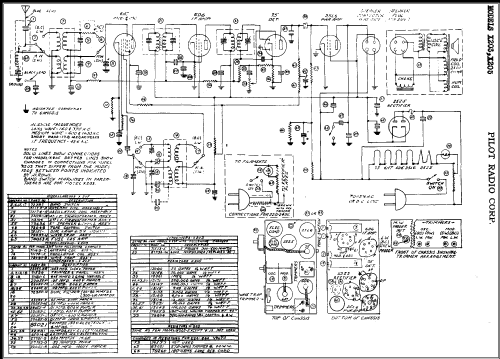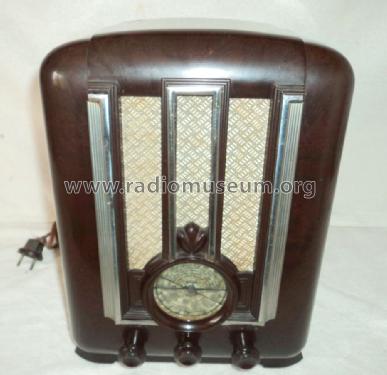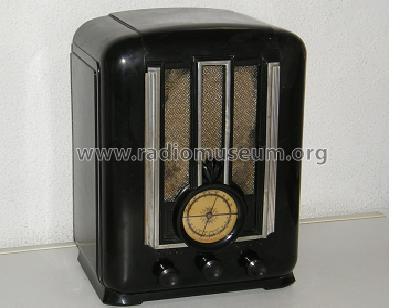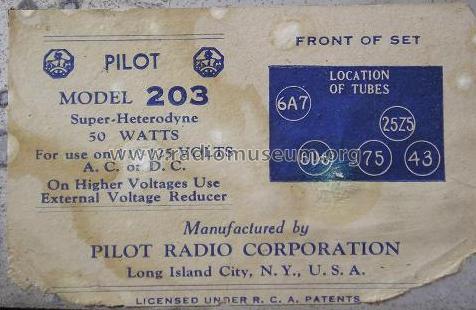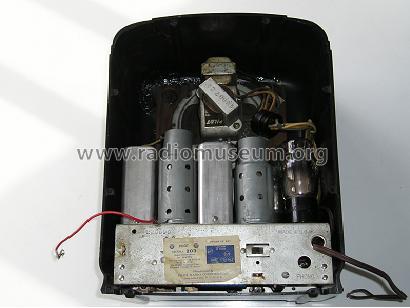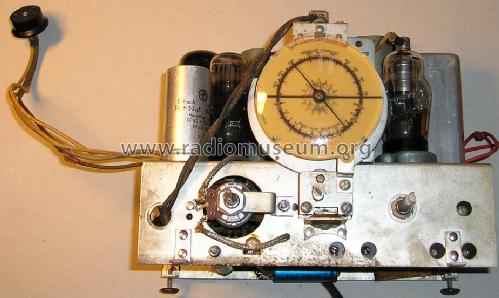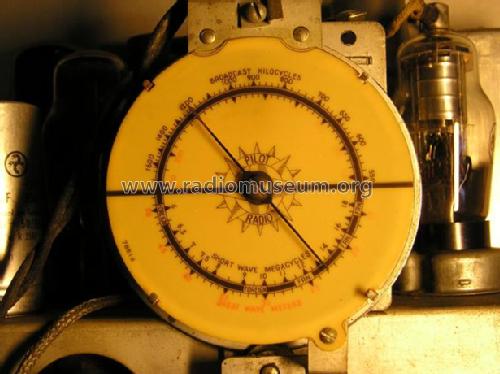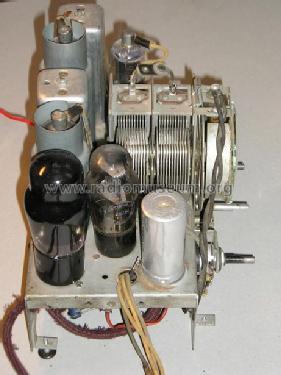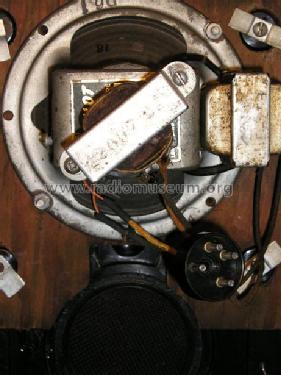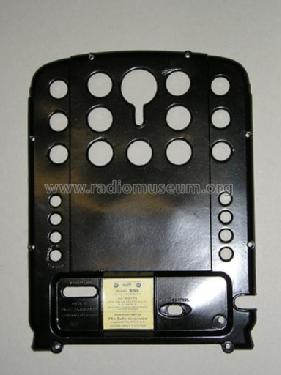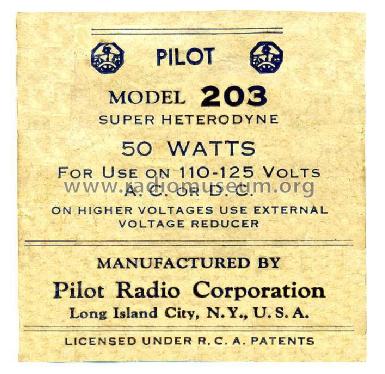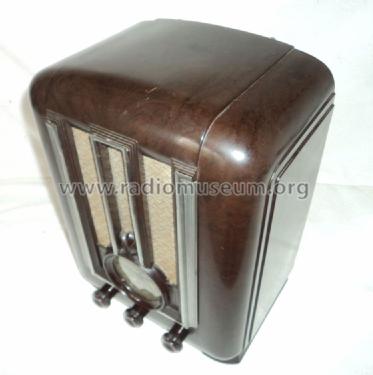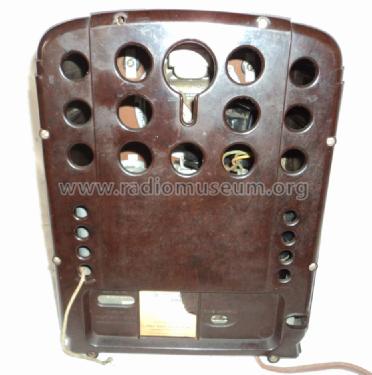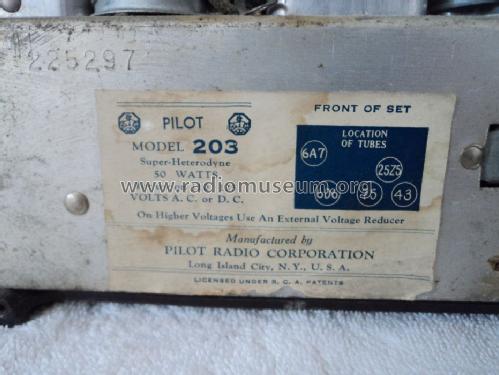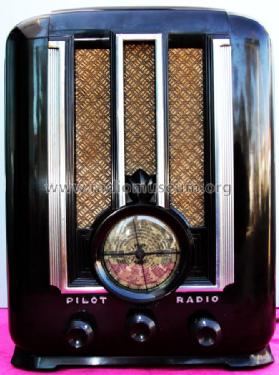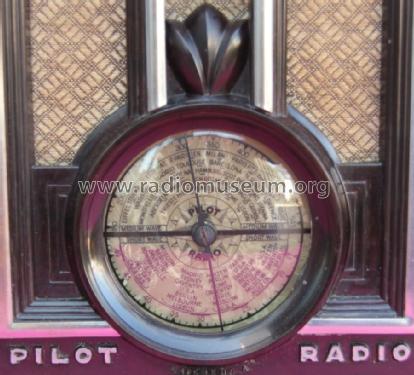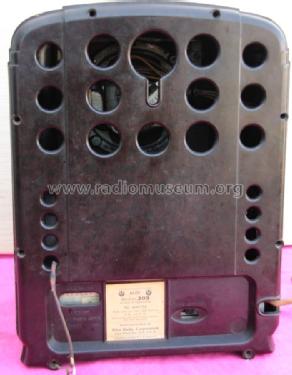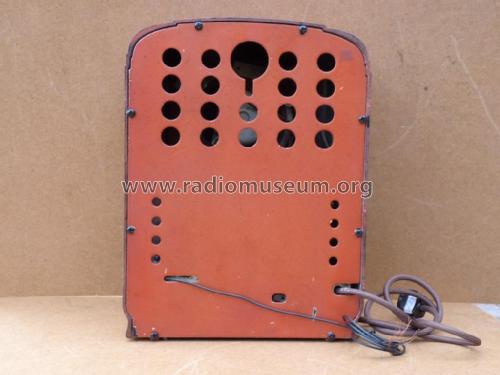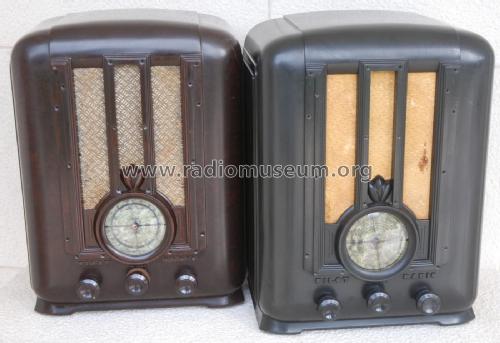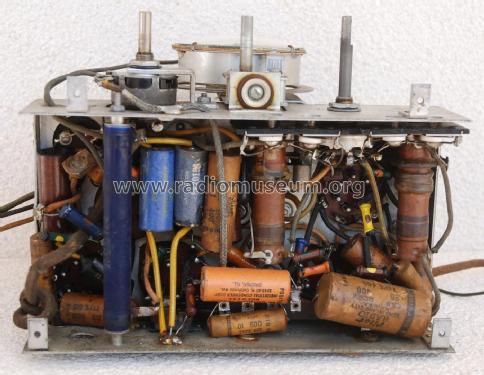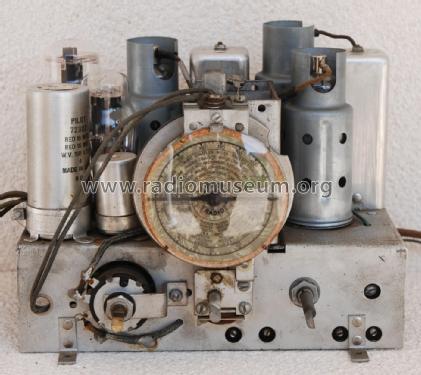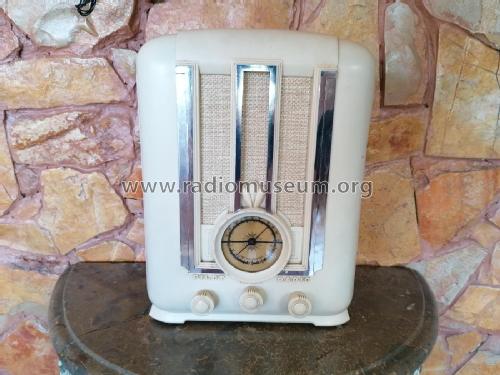- Country
- United States of America (USA)
- Manufacturer / Brand
- Pilot Electric Mfg. Co. (Radio Corp.); Brooklyn (NY)
- Year
- 1936
- Category
- Broadcast Receiver - or past WW2 Tuner
- Radiomuseum.org ID
- 112982
-
- alternative name: Pilot Radio & Television || Pilot Radio and Tube || Pilot Radio Corporation
Click on the schematic thumbnail to request the schematic as a free document.
- Number of Tubes
- 5
- Main principle
- Superheterodyne (common); ZF/IF 456 kHz
- Wave bands
- Broadcast and Short Wave (SW).
- Power type and voltage
- AC/DC-set / 115 Volt
- Loudspeaker
- Electro Magnetic Dynamic LS (moving-coil with field excitation coil) / Ø 5 inch = 12.7 cm
- Power out
- 1 W (unknown quality)
- Material
- Bakelite case
- from Radiomuseum.org
- Model: 203 [75 tube] - Pilot Electric Mfg. Co. Radio
- Shape
- Tablemodel, Tombstone = decorative upright, not cathedral but can have rounded edges.
- Dimensions (WHD)
- 9.3 x 12.6 x 7.1 inch / 236 x 320 x 180 mm
- Notes
- The dial does not bear stationized call letters. Chrome trim around the speaker grille. There is also model 203 using a 76 tube and other X203 models.
- Source of data
- -- Collector info (Sammler)
- Circuit diagram reference
- Rider's Perpetual, Volume 18 = 1949 and before
- Mentioned in
- Machine Age to Jet Age II
- Literature/Schematics (1)
- Author
- Model page created by Konrad Birkner † 12.08.2014. See "Data change" for further contributors.
- Other Models
-
Here you find 544 models, 273 with images and 412 with schematics for wireless sets etc. In French: TSF for Télégraphie sans fil.
All listed radios etc. from Pilot Electric Mfg. Co. (Radio Corp.); Brooklyn (NY)
Collections
The model 203 is part of the collections of the following members.
Forum contributions about this model: Pilot Electric Mfg.: 203
Threads: 4 | Posts: 14
I do not know who to whom I should raise this issue, therefore I apologige for my in advance this.
I do not understand what the reason for the existence of this sheet scheme to which the audio output tube is a 25L6, having all these radios, (photos), the audio output tube in tube they all a 43?
Thank's
A good 2014
Best regards
Júlio Branco
Júlio Branco, 10.Jan.14
Dear All,
In Classic Gallery I found some more information about Pilot 203.
Classic Gallery says that Pilot X203 is the original one. At the beginning this model had no chrome trims (friezes). http://classicradiogallery.com/radiopages/pilotx203.html
About Pilot 203, Classic Gallery says that it is an export model which has no stationized call letters and has different knobs.http://classicradiogallery.com/radiopages/pilot203.html
I think that, at last, these two differences are enough to identify these two different models
I hope this information can help.
Best Regards
Mário Coelho
Mario Coelho, 03.Sep.07
To use early and late would not help. A collector looking for info in RM would never find such a hint on his radio. In our case here the tubes are unambiguous means to discriminate.
In addition "early" and "late" as found in some Sylvania Service notes are in doubt insofar, as both versions are noted for the same year 1936 (Riders vs. Machine Age).
Konrad Birkner † 12.08.2014, 19.May.07
Dear Radio Friends,
Our continuous team search work in order to find out the reasons of some discrepancies brought us out some good news about those two different Pilot 203 versions named by Rmorg :"Pilot 75 tube" & "Pilot 76 tube".
Yesterday, José Duarte Costa shows me a book: "Tube Complement Book with IF-Peaks" From Sylvania. 1938-1939.
Here is a piece of it:

This book also consider two variants of this Pilot 203.
But, it calls them differently. It call them "Early" and “Late”.
It means that these two versions had a chronologic manufacturing sequence. It was not an error of manufacturing or a temporary 76 tube stock break...
First, Pilot manufacturer produced an Early Pilot 203 . Afterwards Pilot produced a Later Pilot 203. Tube series were different.
Why not us,to call these model variants ”Early" and "Later" too, instead of 76 and 75?
Do You agree?
Best Regards
Mário Coelho
Mario Coelho, 17.May.07
